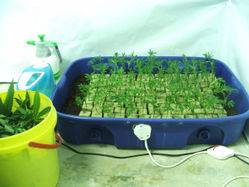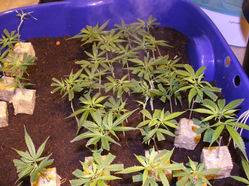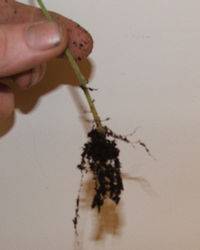Awesome thread, guys, totally cool-i've just gone over from nft to coco and it's helped me already-it was the post about treating the coco more like a hydroponic medium than a soil/compost grow that helped me to understand -i had been leaving them to dry out a bit-like with soil-and they were looking pale and drooped by the end of the lights on period-growth was slow too (well compared to hydro)-
for the past few days i've been watering 2-3 times a day-giving much more water/nutes overall and things have really picked up
one question if anyone can help: do you add Silicon to your nutes as with hydro or is that un-necessary with coco?
cheers
for the past few days i've been watering 2-3 times a day-giving much more water/nutes overall and things have really picked up
one question if anyone can help: do you add Silicon to your nutes as with hydro or is that un-necessary with coco?
cheers









 and the plants looked the same! pretty forgiving hydro medium I'd say.
and the plants looked the same! pretty forgiving hydro medium I'd say.

